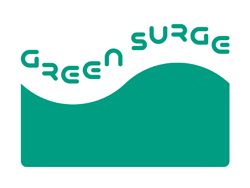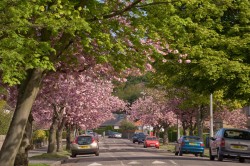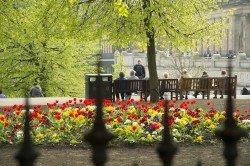Summary
Summary

This project aims to meet the demand for knowledge and practical tools to improve the planning and governance of urban green spaces. Researchers from many disciplines, including ecologists, geographers and social scientists are working together with practitioners such as planners, arboriculturists, and parks managers to provide new knowledge on the linkages between urban green infrastructure and important societal goals such as health and well-being, community cohesion, climate change adaptation and the green economy.
Research objectives
 There are 6 research focused work packages in this project each with separate but linked objectives. Forest Research is contributing expertise and management support across the following:
There are 6 research focused work packages in this project each with separate but linked objectives. Forest Research is contributing expertise and management support across the following:
WP7. Urban Learning Labs. Forest Research leads on delivery. The objective is to identify urban green space stakeholders and organize regular workshops to engage in knowledge exchange that builds and tests new methods of building urban green infrastructure and the promotion of biocultural diversity.
For example, in Scotland, the ULL is using Forest Research expertise to explore how insect pollinators such as bees and butterflies are influenced by the proportion of trees, shrubs and grass within domestic gardens in the city, and what this means for steps to support biodiversity.
WP6. Innovative governance of urban green space. Forest Research assists Wageningen University with delivery. The objective is to identify innovative methods of involving communities and private individuals in aspects of urban green space management.
Forest Research has investigated community woodland management, urban agriculture, citizen science and Neighbourhood Planning in Edinburgh and Bristol.
WP2. Assessment of biocultural diversity. Forest Research provided expertise to examine how the socio-cultural background of users influences urban green space preferences.
WP3. Functional Linkages. Forest Research used spatial mapping and analysis techniques to explore relationships between urban green space, biodiversity, biocultural diversity, human health and social cohesion, including synergies, trade-offs and spatial conflicts.
WP5. Green infrastructure planning. Forest Research has supported research looking at social inclusion and social cohesion in relation to urban planning systems.
Results
 The results coming through from the different work packages are captured in a range of different resources. Key messages from:
The results coming through from the different work packages are captured in a range of different resources. Key messages from:
WP7. Urban Learning Labs
- Involving researchers and practitioners in iterative place-based knowledge exchange and learning opportunities can lead to fruitful advances in knowledge and understanding for all parties leading to innovative actions to support urban green space development
- Institutional and regulatory barriers present particular challenges to moving past ideas and through to action
- Finding common language to translate researcher understanding and scientific outputs into forms other stakeholders can understand and apply was a specific challenge
- Biocultural diversity and urban agriculture emerged as particularly strong areas of interest across the five European cities involved
WP6. Innovative governance
- There are an extremely diverse variety of ways in which individuals, communities and civil society organisations engage with local authorities and other managers of urban green space across Europe
- All urban green spaces are open to governance which include individuals, communities and civil society organisations including riversides and wetlands, cemeteries and churchyards, roadsides and verges, green walls and green roofs, brownfield sites, urban parks, urban woodland, community gardens and urban agricultural land
- Innovation in governance may be about:
- novel uses, functions and activities in and for green space
- novel and adaptive organisational structures, relationships and legal arrangements
- new ways of sourcing funding and resourcing
- problem-solving approaches to green space maintenance and management
- Innovation in governance arrangements revealed itself in six different models:
- Grassroots initiatives
- Organisation initiated initiatives
- Green Hubs
- Co-governance with government agencies
- Green barter
- Municipalities mobilising social capital
- Green space governance can be conceptualised as “mosaic governance” across the urban landscape with a variation of arrangements suited to specific spatial scales, green space features and the types of active citizenship present.
The full collection of research papers, policy briefs, fact sheets, project reports, handbooks and practice guides can be accessed through the Products’ page of the Green Surge website.
Status
Start date: November 2013
End date: November 2017
Contact
Funders and partners
This research is funded by EU Seventh Framework Programme. The project consortium includes 24 partners from 11 European countries.
Forestry Commission policy
Devolved forestry policy is widely committed to urban forestry and maintaining a resilient urban canopy. In Scotland there is specific support for maintaining urban green networks. Policy is set out in the following documents:
Defra and Forestry Commission England’s policy statement and Corporate Plan
NRW and Welsh Government’s Woodlands for Wales and Action Plan
